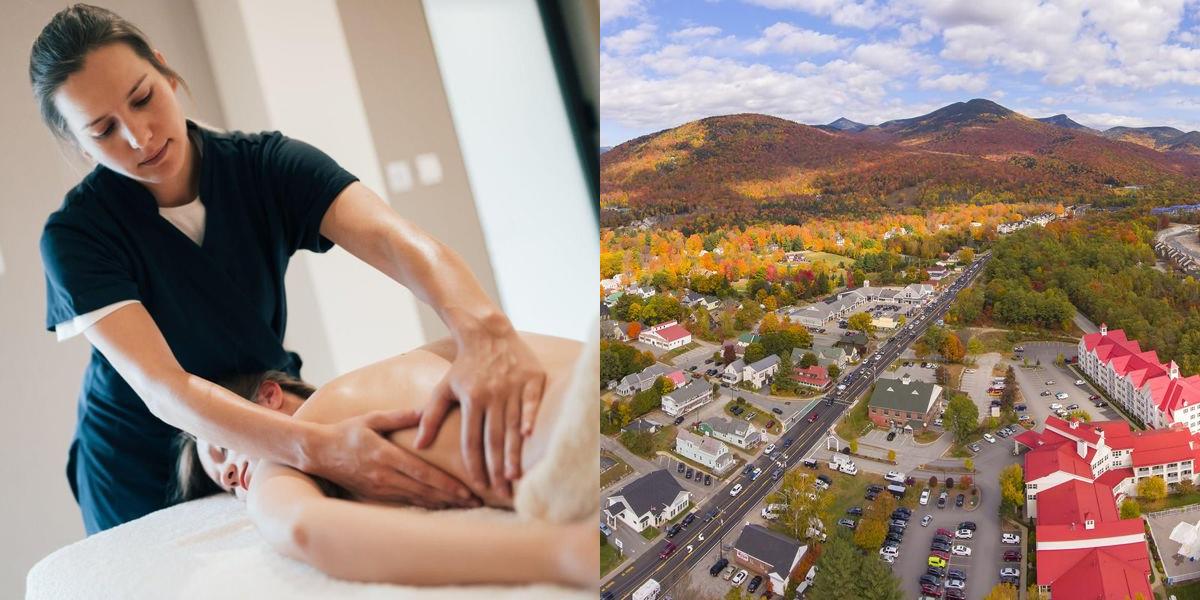How to Become a Massage Therapist in New Hampshire

Massage therapy is a rewarding career that involves helping individuals relax, reduce pain, and improve their overall well-being. If you have a passion for healing touch and want to pursue a career in the field, this guide will provide you with the necessary information on how to become a massage therapist in New Hampshire.
Step 2: Network and build professional connections
Networking is an important part of finding a job as a massage therapist. Reach out to your instructors, classmates, and other professionals in the field to let them know you are looking for job opportunities. Attend industry events, conferences, and workshops to meet and connect with other professionals. Building a strong professional network can help you hear about job openings and make valuable connections in the industry.
Step 3: Apply for job openings
Once you have your resume and cover letter ready and have built professional connections, start applying for job openings. Look for job postings on job boards, professional association websites, and healthcare facilities. You can also reach out directly to massage therapy clinics, spas, wellness centers, and chiropractic offices to inquire about any job opportunities they may have. Tailor your application to each specific job and follow up with a thank-you note after submitting your application or after an interview.
Step 4: Prepare for interviews
If you are selected for an interview, it is important to prepare in advance. Research the company or facility you are interviewing with, familiarize yourself with their services and values, and come up with a list of questions to ask during the interview. Practice answering common interview questions and be prepared to discuss your education, experience, and why you are interested in the position. Dress professionally and arrive on time for the interview.
Step 5: Consider starting your own practice
Another option for massage therapists is to start their own practice. This allows you to have more control over your schedule, services offered, and pricing. However, starting your own practice requires additional skills and knowledge in business management, marketing, and client acquisition. If you choose to start your own practice, it is important to do thorough research, create a business plan, and seek guidance from professionals who can help you navigate the process.
Career Paths and Opportunities after Becoming a Massage Therapist
Once you have obtained your massage therapist certification and license, there are several career paths and opportunities available to you. Here are a few options to consider:
1. Work in a spa or wellness center
Many massage therapists start their careers by working in spas or wellness centers. These establishments offer a wide range of massage and bodywork services to clients seeking relaxation, stress relief, and overall well-being. Working in a spa or wellness center allows you to gain experience, build a client base, and learn from other experienced professionals in the industry.
2. Join a healthcare team
Massage therapy is increasingly being recognized as a valuable complement to traditional healthcare practices. Many healthcare facilities, such as hospitals, rehabilitation centers, and chiropractic offices, employ massage therapists as part of their healthcare teams. Working in a healthcare setting allows you to work collaboratively with other healthcare professionals and provide massage therapy to patients who can benefit from it as part of their treatment plan.
3. Specialize in a specific modality or population
As a massage therapist, you may choose to specialize in a specific modality or population. For example, you could become certified in deep tissue massage, sports massage, prenatal massage, or oncology massage. Specializing in a specific modality or population allows you to develop expertise in that area and attract clients who have specific needs or preferences.
4. Become an instructor or educator
If you have a passion for teaching and sharing your knowledge with others, you may consider becoming an instructor or educator in the field of massage therapy. Many massage therapy schools and programs hire experienced massage therapists to teach courses and mentor aspiring massage therapists. Becoming an instructor or educator allows you to contribute to the growth and development of the next generation of massage therapists.
5. Start your own practice
Starting your own massage therapy practice is another option to consider. This allows you to have more control over your schedule, services offered, and pricing. However, starting your own practice requires additional skills and knowledge in business management, marketing, and client acquisition. It is important to do thorough research, create a business plan, and seek guidance from professionals who can help you navigate the process.
Final Thoughts
Becoming a certified massage therapist is an exciting journey that requires dedication, passion, and a commitment to lifelong learning. By completing a massage therapy program, fulfilling the required practice hours, passing the licensing exam, and obtaining your massage therapist license, you can start your career as a massage therapist. Whether you choose to work in a spa, join a healthcare team, specialize in a specific modality or population, become an instructor, or start your own practice, there are numerous career paths and opportunities available to you. Remember to continue expanding your knowledge and skills through continuing education courses and workshops to stay current in the field and provide the best care possible to your clients.
Click here to learn more about how to become a massage therapist.
Click here to learn more about the difference between a massage therapist and a physical therapist.
Wondering if there's more? Perhaps these other articles will be more helpful if this one isn't exactly what you're after:

Athena is Co-founder and CEO of Dreambound.




